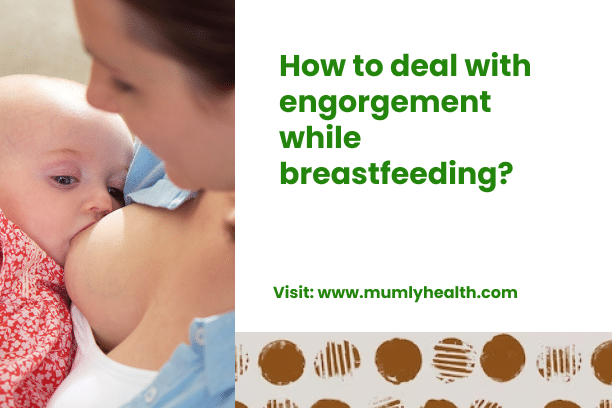Breast engorgement, also known as early postpartum engorgement, refers to the swelling of the breasts that occurs shortly after childbirth. This phenomenon occurs as your body transitions from the initial stage of lactation, which begins during pregnancy, to the subsequent stage.
The second stage commences a few days after giving birth, signaling the onset of milk production. As your body prepares to increase milk production, it boosts blood and lymph flow to the breasts, resulting in a buildup of fluid between breast tissues, leading to discomfort and other symptoms.
The encouraging aspect is that early postpartum engorgement is transient in nature. Typically, it reaches its peak, characterized by the most severe symptoms, around five days post-delivery. By the time you reach the two-week mark postpartum, engorgement tends to alleviate. Employing established methods can help alleviate discomfort during this period.
Symptoms and Causes
What does an engorged breast feel like?
When experiencing breast engorgement, you may observe:
- Swelling in both breasts, particularly in the lower regions, farthest from the chest.
- Breast pain, sometimes intense.
- Breasts feeling firm or hard.
- Occasionally, symptoms such as sweating, fever, and chills. These alterations typically manifest around three to five days after childbirth. In certain instances, engorgement may not commence until postpartum days nine or 10. Engorgement can also occur whenever there’s a disparity between milk production and its removal. This explains why it’s more prevalent among those who use a breast pump, as they aren’t relying on their baby to signal when milk removal is needed.
During breast engorgement, your baby may find it challenging to latch on for breastfeeding (or chestfeeding).
If you experience a fever or chills, you might assume it’s indicative of an infection. However, this isn’t always the case. These symptoms can arise due to breast inflammation, which can have systemic effects on the body. Nevertheless, inflammatory or bacterial mastitis, which may follow inflammatory mastitis, can present with similar symptoms. Mastitis typically progresses over several days and is characterized by warmth and redness in the breast.
Therefore, it’s crucial to consult a healthcare provider if you notice any changes in your breasts. They can determine the underlying cause and provide appropriate management.
Read Also: Starting a dairy free breastfeeding diet: 4 amazing guidelines to follow
What causes breast engorgement?
Breast engorgement results from an elevation in the volume of blood and lymph (a clear, watery fluid) within your breasts. Healthcare professionals refer to this increased blood flow to a specific body area as hyperemia. In the context of lactation, there is an augmented blood flow to the breasts to facilitate milk production. Lymph plays a crucial role in supplying essential nutrients to cells and tissues while eliminating waste products. The surplus of these fluids can induce swelling in the breasts, contributing to discomfort.
